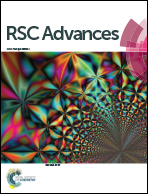Sulfidation modulates the toxicity of biogenic copper nanoparticles
Abstract
Nanotoxicology is an important field that has started to unravel the adverse effects of nanoparticles. The major emphasis is on developing strategies to reduce the toxicity of nanomaterials. Chemical transformations of metal nanoparticles have been suggested to be an important method of mitigating nanoparticle toxicity. In the present study, we investigated the toxicity of copper and copper sulfide nanoparticles in a zebrafish model using a series of biomarkers of toxicity. The exposure of zebrafish to copper nanoparticles enhanced the oxidative stress of the liver, altered the detoxification enzymes and affected the brain acetylcholinesterase activity. However, the exposure of zebrafish to sulfidated copper nanoparticles rescued these parameters. Histopathological analyses of the liver and metallothionein levels also support the significance of sulfidation as a potential mechanism for controlling copper nanoparticle toxicity. More importantly, micronucleus formation was significantly reduced in the liver of fish exposed to sulfidated copper nanoparticles when compared to non-sulfidated nanoparticles. The presented biochemical data provides strong evidence for a reduction in the toxicity of copper nanoparticles when it undergoes chemical transformation as copper sulfide.


 Please wait while we load your content...
Please wait while we load your content...